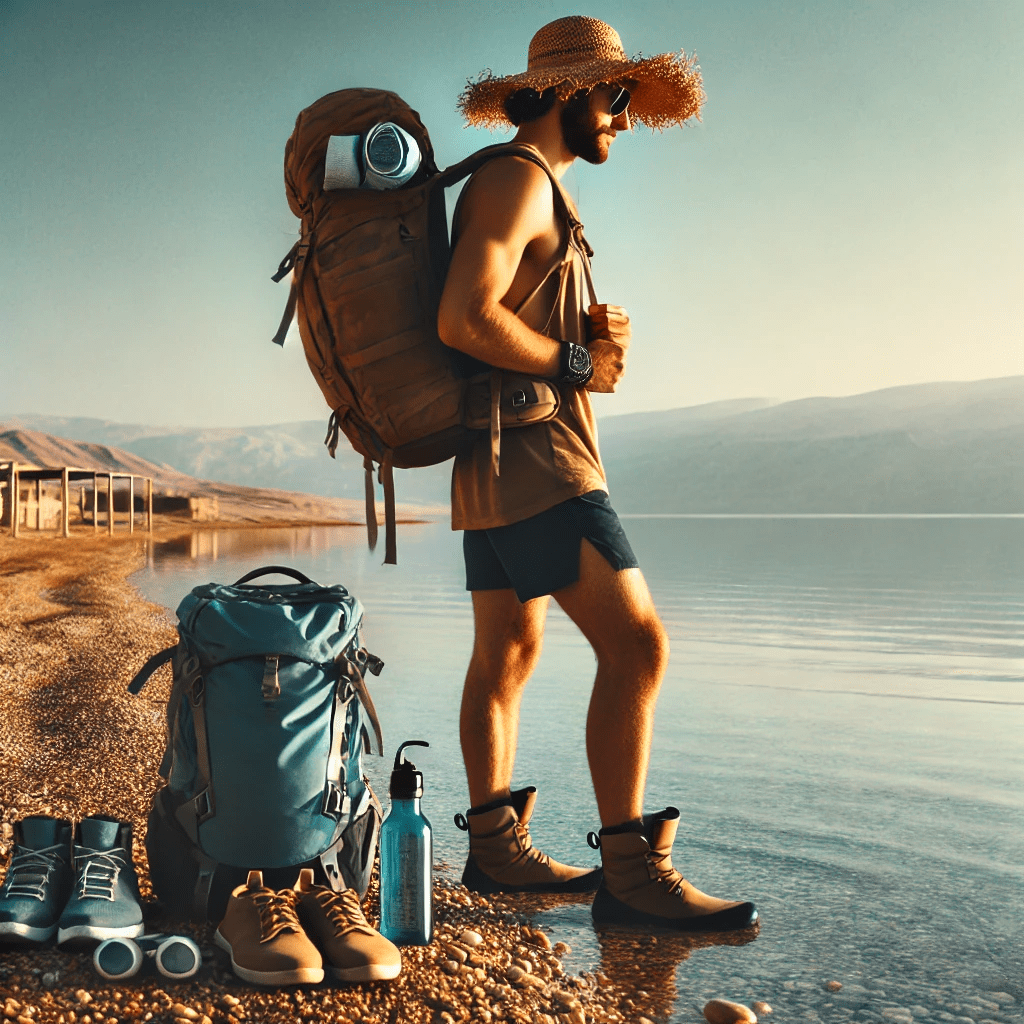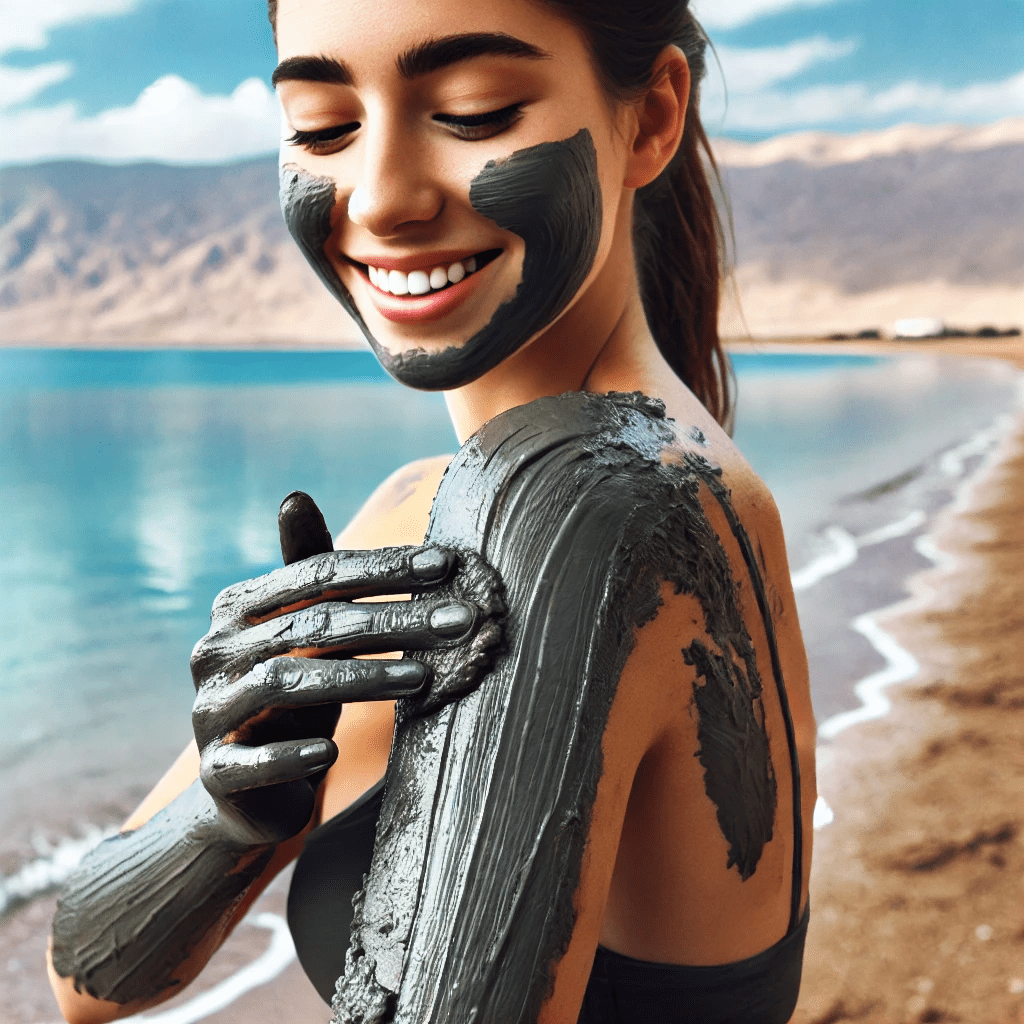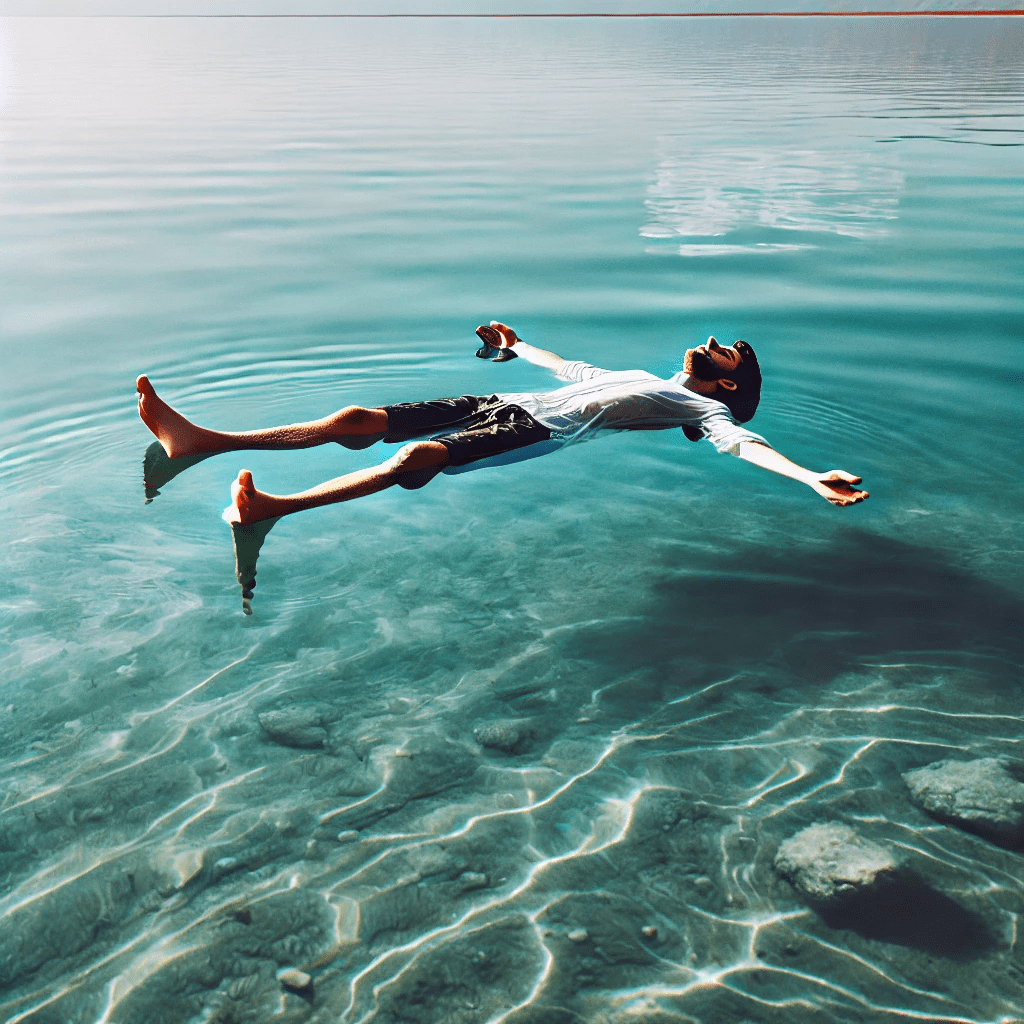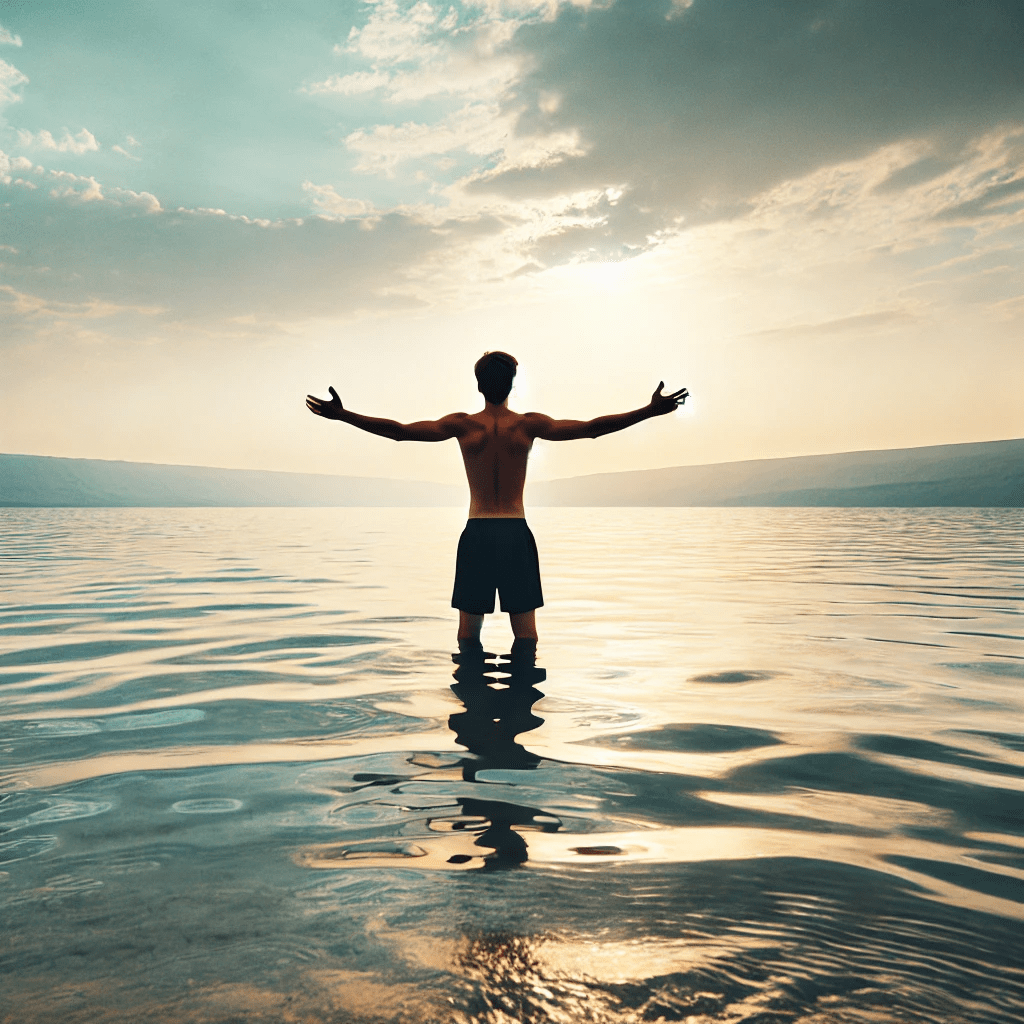Swimming in the Dead Sea: Your Best Guide in 2025
Swimming in the Dead Sea is an experience like no other. Imagine floating effortlessly on the water so dense with salt that sinking is impossible, all while being surrounded by breathtaking landscapes. The Dead Sea, one of the world’s most unique natural wonders, offers an extraordinary swimming experience that combines relaxation, therapeutic benefits, and awe-inspiring views. This guide will take you through everything you need to know about swimming in the Dead Sea, from preparation and safety tips to frequently asked questions and beyond. Get ready to immerse yourself in the ultimate guide to swimming in the Dead Sea, ensuring your visit is as safe as it is unforgettable.

The Uniqueness of Swimming in the Dead Sea
When you think about swimming, the Dead Sea might seem like an unusual choice. However, swimming in the Dead Sea is an experience that defies the norms of swimming as we know it. Unlike any other body of water, the Dead Sea is known for its extreme salinity, which is nearly ten times higher than that of the ocean. This unique characteristic is what allows you to float effortlessly on the surface of the water. Swimming in the Dead Sea is more about floating and enjoying the buoyancy rather than swimming in the traditional sense.
But what truly sets swimming in the Dead Sea apart is its combination of natural beauty and therapeutic properties. The water’s high mineral content is not only responsible for the unique floating experience but also offers a range of health benefits. Many visitors come to the Dead Sea specifically for its healing properties, making swimming in the Dead Sea not just a fun activity but also a rejuvenating one.
How to Prepare for Swimming in the Dead Sea
Step 1: Understanding the Geography
Before you set out on your adventure of swimming in the Dead Sea, it’s important to understand where this natural wonder is located. The Dead Sea is situated in the Jordan Rift Valley, bordered by Jordan to the east and Israel and Palestine to the west. This geographic location means that you have multiple entry points, depending on which side you choose to visit.
Most visitors access the Dead Sea from Israel or Jordan. In Israel, popular spots include Ein Bokek and Kalia Beach, while in Jordan, the resorts near Sweimeh are the go-to destinations. No matter which side you choose, the experience of swimming in the Dead Sea is equally spectacular, offering stunning views and the same unique buoyancy.
Step 2: Packing the Essentials for Swimming in the Dead Sea

When planning your trip, packing the right items is crucial to ensure you enjoy swimming in the Dead Sea to the fullest. Here’s a checklist of essentials:
- Sunscreen: The sun is strong in the region, especially since the Dead Sea is located at the lowest point on Earth. Protect your skin from UV radiation with a high-SPF sunscreen.
- Water Shoes: The seabed can be rocky and covered in sharp salt crystals. Water shoes will protect your feet from injury while swimming in the Dead Sea.
- Towel: After swimming, you’ll want a towel to dry off and remove any excess salt from your skin.
- Fresh Water: Rinsing off with fresh water immediately after swimming in the Dead Sea is essential to remove the salt and prevent your skin from drying out.
- Hat and Sunglasses: The sun can be intense, so protecting your face and eyes is important.
Step 3: Choosing the Best Time for Swimming in the Dead Sea
Timing your visit is key to having the best experience while swimming in the Dead Sea. The ideal times to visit are during the spring (March to May) and autumn (September to November). During these months, the weather is mild, with temperatures ranging between 20-30°C (68-86°F), making swimming in the Dead Sea comfortable and enjoyable.
While it’s possible to swim in the Dead Sea year-round, summer can be extremely hot, with temperatures often exceeding 40°C (104°F). Winter, on the other hand, can bring cooler temperatures, especially in the evenings. However, the water remains warm enough for swimming in the Dead Sea, making it a viable destination regardless of the season.
Step 4: Traveling to the Dead Sea
Once you’ve packed your essentials and chosen the best time to visit, the next step is getting to the Dead Sea. Whether you’re staying in Israel, Jordan, or even nearby Palestine, reaching the Dead Sea is relatively straightforward.
From Israel, the Dead Sea is about a two-hour drive from Tel Aviv or Jerusalem. If you’re traveling from Amman, Jordan, the Dead Sea is also approximately two hours away by car. While public transportation options are available, they can be limited, so renting a car or joining a guided tour might be the most convenient way to ensure you have ample time for swimming in the Dead Sea.
The Experience of Swimming in the Dead Sea

What to Expect While Swimming in the Dead Sea
Swimming in the Dead Sea is a unique experience that begins the moment you step into the water. Unlike regular seawater, the water in the Dead Sea feels thicker and more viscous due to its high salt and mineral content. This density is what allows you to float effortlessly, even if you’re not an experienced swimmer.
As you enter the water, you’ll notice the sensation of being gently lifted to the surface. It’s an extraordinary feeling, often described as floating on a waterbed or even experiencing zero gravity. The buoyancy is so strong that swimming in the Dead Sea is more about relaxing and enjoying the floating sensation rather than actively swimming.
Safety Tips for Swimming in the Dead Sea
While swimming in the Dead Sea is generally safe, there are a few important safety tips to keep in mind to ensure a pleasant experience:
- Avoid Ingesting the Water: The water in the Dead Sea is extremely salty, and ingesting even a small amount can cause nausea and discomfort.
- Don’t Shave Before Swimming: The high salt content can irritate freshly shaved skin or any small cuts, so it’s best to avoid shaving right before swimming in the Dead Sea.
- Enter the Water Slowly: The seabed can be slippery due to the salt and mud. Take your time when walking into the water to avoid slipping.
- Keep Your Head Above Water: The salt can be very irritating to your eyes, so it’s best to avoid splashing and to keep your head above water at all times.
The Health Benefits of Swimming in the Dead Sea
Swimming in the Dead Sea isn’t just a novel experience; it also offers a range of health benefits thanks to its high mineral content. The water is rich in magnesium, calcium, potassium, and other minerals known for their therapeutic properties.
- Skin Health: The minerals in the Dead Sea water can help improve various skin conditions, including psoriasis, eczema, and acne. Many visitors report smoother, clearer skin after swimming in the Dead Sea.
- Joint Pain Relief: The buoyancy of the water takes the pressure off your joints, which can provide relief for those with arthritis or other joint conditions.
- Detoxification: The salt in the Dead Sea is believed to help detoxify the body by drawing out impurities through the skin.
Enhancing Your Experience of Swimming in the Dead Sea
To make the most of your time swimming in the Dead Sea, it’s important to take advantage of the unique environment and its natural resources.

- Apply the Famous Dead Sea Mud: One of the most popular activities while swimming in the Dead Sea is covering yourself in the mineral-rich mud found along the shore. Allow the mud to dry on your skin before rinsing it off in the water. This is believed to have numerous skin benefits, leaving your skin feeling soft and rejuvenated.
- Relax and Float: Don’t rush your time in the water. Take the opportunity to float and relax, soaking in the surreal experience of swimming in the Dead Sea. The feeling of weightlessness is incredibly calming and therapeutic.
- Stay Hydrated: The high salt content can dehydrate you quickly, so it’s essential to drink plenty of water before and after swimming in the Dead Sea.
FAQs About Swimming in the Dead Sea
Can Anyone Float While Swimming in the Dead Sea?

Absolutely! One of the most incredible features of swimming in the Dead Sea is that everyone, regardless of their swimming ability, can float effortlessly. The unique buoyancy of the Dead Sea’s water is due to its extremely high salt concentration, which is almost ten times that of regular seawater. This high density causes your body to be pushed up to the surface, making it nearly impossible to sink.
Floating in the Dead Sea is an experience unlike any other. It’s not just the physical sensation of floating that’s remarkable, but also the feeling of complete relaxation it brings. Many people describe the sensation as almost surreal—like being suspended in space. You don’t need to tread water or struggle to stay afloat; the water does all the work for you. This makes swimming in the Dead Sea particularly enjoyable for those who are not strong swimmers or who might feel uneasy in deeper waters.
However, while the buoyancy makes it easy to float, it also means that traditional swimming strokes can be a bit awkward. The best way to enjoy the water is to lean back, spread your arms and legs, and let yourself be cradled by the salty waters of the Dead Sea. Just lie back, relax, and take in the stunning views around you.
Is Swimming in the Dead Sea Safe for Everyone?
For the most part, swimming in the Dead Sea is safe and accessible to everyone, but there are a few considerations to keep in mind to ensure a comfortable experience. The high salt content in the water, while providing the buoyancy that makes floating so easy, can also be quite harsh on the skin. If you have any open cuts, abrasions, or even freshly shaved skin, it’s best to be cautious as the salt can cause a stinging sensation. The experience is often compared to getting salt in a cut—it can be sharp and uncomfortable, though not usually harmful.
People with certain skin conditions, like psoriasis, often visit the Dead Sea for its reputed therapeutic properties. The minerals in the water, such as magnesium and potassium, can be beneficial for the skin. However, it’s always advisable to consult with a healthcare professional before taking a dip, especially if you have sensitive skin or a chronic condition. For most people, the experience of swimming in the Dead Sea is not only safe but also beneficial, offering a natural spa-like treatment that leaves the skin feeling soft and refreshed.
It’s also important to consider respiratory issues. The air around the Dead Sea is rich in bromine, a mineral that can be helpful for people with certain respiratory conditions, but it can also be challenging for those with asthma or other breathing difficulties. If you have any respiratory concerns, it’s wise to monitor your symptoms closely while in the area and avoid strenuous activities.
What Should I Do if I Get Water in My Eyes While Swimming in the Dead Sea?
Getting water in your eyes while swimming in the Dead Sea can be quite uncomfortable due to the high salt content, which can cause a burning sensation. If this happens, the first thing you should do is remain calm and avoid rubbing your eyes, as this can exacerbate the irritation.
To alleviate the discomfort, it’s important to rinse your eyes with fresh water as soon as possible. Many beaches and resorts around the Dead Sea have freshwater showers or stations specifically for this purpose. Gently splash the fresh water into your eyes until the burning sensation subsides. It’s a good idea to bring a bottle of fresh water with you when you enter the water, just in case you need to rinse your eyes immediately.
To prevent getting saltwater in your eyes in the first place, consider wearing sunglasses or swimming goggles while you’re in the Dead Sea. This can protect your eyes from accidental splashes and make your experience more comfortable.
Can I Swim in the Dead Sea Year-Round?
Yes, swimming in the Dead Sea is possible year-round, but the experience can vary depending on the season. The Dead Sea is located in a desert climate, which means it enjoys mild winters and hot summers, with plenty of sunshine throughout the year.
The best time to swim in the Dead Sea is during the spring (March to May) and autumn (September to November) when the weather is most pleasant. During these months, temperatures typically range from 20-30°C (68-86°F), making the environment comfortable for swimming and sunbathing. The water temperature remains relatively warm, allowing for a relaxing swim even in the cooler months.
Summer, on the other hand, can be extremely hot, with daytime temperatures often exceeding 40°C (104°F). While the water can still provide relief from the heat, the intense sun can make it uncomfortable to stay outside for long periods. If you plan to visit the Dead Sea in the summer, it’s best to swim early in the morning or late in the afternoon when the sun is less intense.
Winter months are cooler, with temperatures ranging between 15-20°C (59-68°F). While this might be too cool for some, the Dead Sea’s water remains warm enough for a swim. The winter season is also less crowded, offering a more tranquil experience. However, be prepared for cooler air temperatures when you exit the water.
Are There Any Restrictions While Swimming in the Dead Sea?
While swimming in the Dead Sea is generally unrestricted, there are a few important guidelines to follow to ensure your safety and the preservation of this unique environment:
- Don’t Submerge Your Head: The high salt content of the Dead Sea’s water can cause severe irritation if it gets into your eyes, nose, or mouth. It’s best to keep your head above water at all times. If water does get into your eyes, rinse them immediately with fresh water.
- Don’t Drink the Water: The water is far too salty to be consumed and can cause nausea if ingested. Always avoid swallowing the water while swimming in the Dead Sea.
- Avoid Splashing: The Dead Sea is not a place for playful splashing, as the water can easily get into your eyes or mouth. Instead, the focus should be on relaxing and floating.
- Don’t Take Mud Home: While it’s tempting to take some of the famous Dead Sea mud with you, it’s best to leave it behind. Removing mud from the area can impact the local environment, and it’s important to help preserve this natural wonder.
- Respect Local Customs: The Dead Sea is a site of cultural and historical significance for many people. Be mindful of local customs, especially if you’re swimming in a public area. Modesty is appreciated, and it’s a good idea to familiarize yourself with local practices before your visit.
Can Children Safely Enjoy Swimming in the Dead Sea?
Yes, children can safely enjoy swimming in the Dead Sea, but there are some important precautions to take. The high salt concentration can be overwhelming for young children, especially if they are not used to the sensation of floating. It’s essential to supervise children closely to ensure they do not ingest the water or get it in their eyes, which can cause discomfort.
Children may also need extra guidance to understand the importance of floating rather than traditional swimming. The buoyancy can feel strange to them at first, but once they get used to it, many children find floating in the Dead Sea to be a fun and novel experience.
It’s also a good idea to bring fresh water to rinse off any salt that may irritate their skin. After swimming, make sure to moisturize their skin, as the salt can be drying.
How Long Should I Stay in the Water While Swimming in the Dead Sea?
It’s recommended not to stay in the water for more than 20 minutes at a time. The high mineral content, while beneficial, can also be drying to the skin and potentially irritating if you stay in too long. After your swim, it’s important to rinse off with fresh water to remove the salt and then apply a moisturizer to keep your skin hydrated.
Some people choose to take multiple short dips throughout their visit rather than one long swim. This allows you to enjoy the therapeutic benefits of the water without overexposing your skin to the salts and minerals.
What Should I Wear While Swimming in the Dead Sea?
When swimming in the Dead Sea, it’s best to wear a swimsuit that you don’t mind potentially damaging. The high salt content can be harsh on fabrics, and your swimwear may fade or feel rough after exposure to the water. Many visitors choose to wear older swimsuits for this reason.
Wearing water shoes is also highly recommended. The seabed can be rocky and is often covered with sharp salt crystals that can cut or irritate your feet. Water shoes will protect your feet and make it easier to walk in and out of the water.
Additionally, consider wearing a wide-brimmed hat and sunglasses to protect your face and eyes from the strong sun.
Is There an Ideal Time of Day for Swimming in the Dead Sea?
The best time of day for swimming in the Dead Sea is usually early in the morning or late in the afternoon. During these times, the temperatures are cooler, and the lighting is perfect for taking photos of the stunning landscape. The midday sun can be extremely intense, making it uncomfortable to stay outside for extended periods. If you’re visiting in the summer, swimming during the early morning or late afternoon can help you avoid the peak heat.
Swimming in the Dead Sea at sunset is also a magical experience. The setting sun casts a beautiful glow over the water, creating a serene and picturesque environment. Many visitors find that this is the perfect time to relax and take in the beauty of the Dead Sea.
Conclusion

Swimming in the Dead Sea is an unforgettable experience that combines the unique sensation of floating effortlessly with the therapeutic benefits of its mineral-rich waters. Whether you’re visiting for relaxation, health reasons, or simply to check off a bucket list item, swimming in the Dead Sea is an adventure you’ll cherish forever.
Before you head out, make sure to explore other exciting travel tips and outdoor adventures, like our articles on the best backpacking tents under $200 and the best tripods for backpacking. For more in-depth travel insights, consider visiting Lonely Planet or National Geographic to broaden your horizons even further.
By following this comprehensive guide, you can ensure that your experience of swimming in the Dead Sea is both safe and enjoyable. Embrace the moment, float in the serene waters, and take in the beauty of one of the world’s most extraordinary natural wonders. Enjoy your time, and make sure to treasure every second of this once-in-a-lifetime experience!
